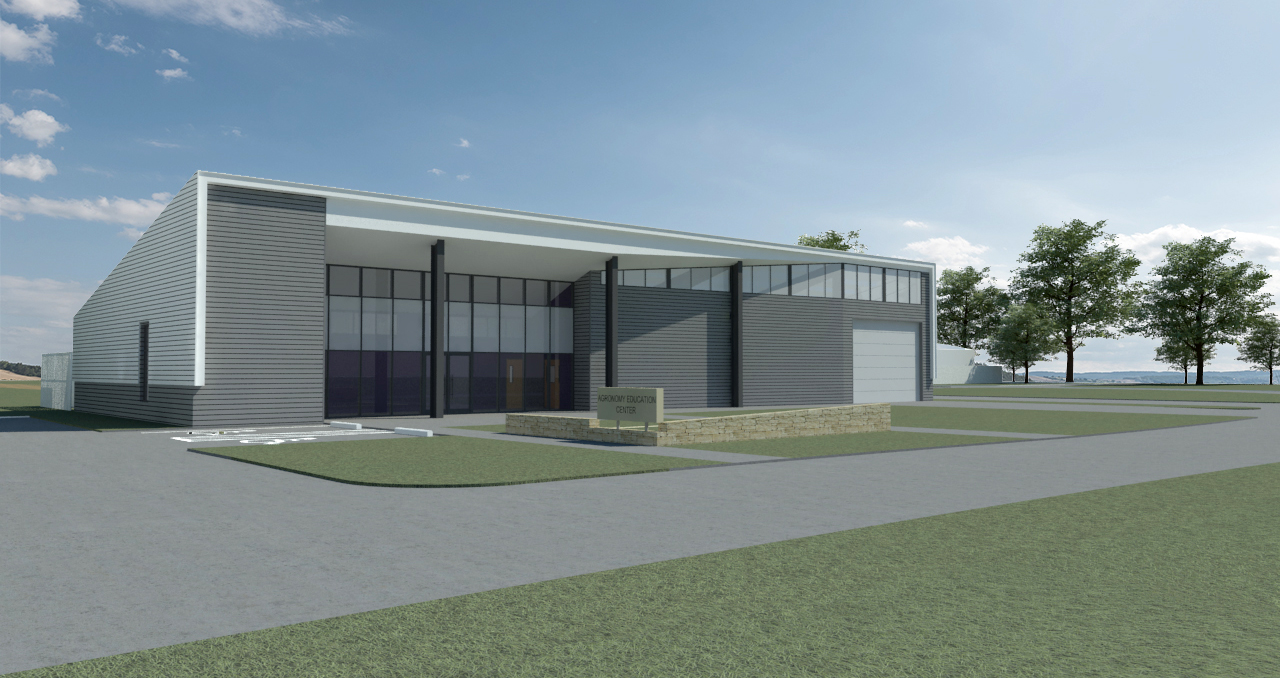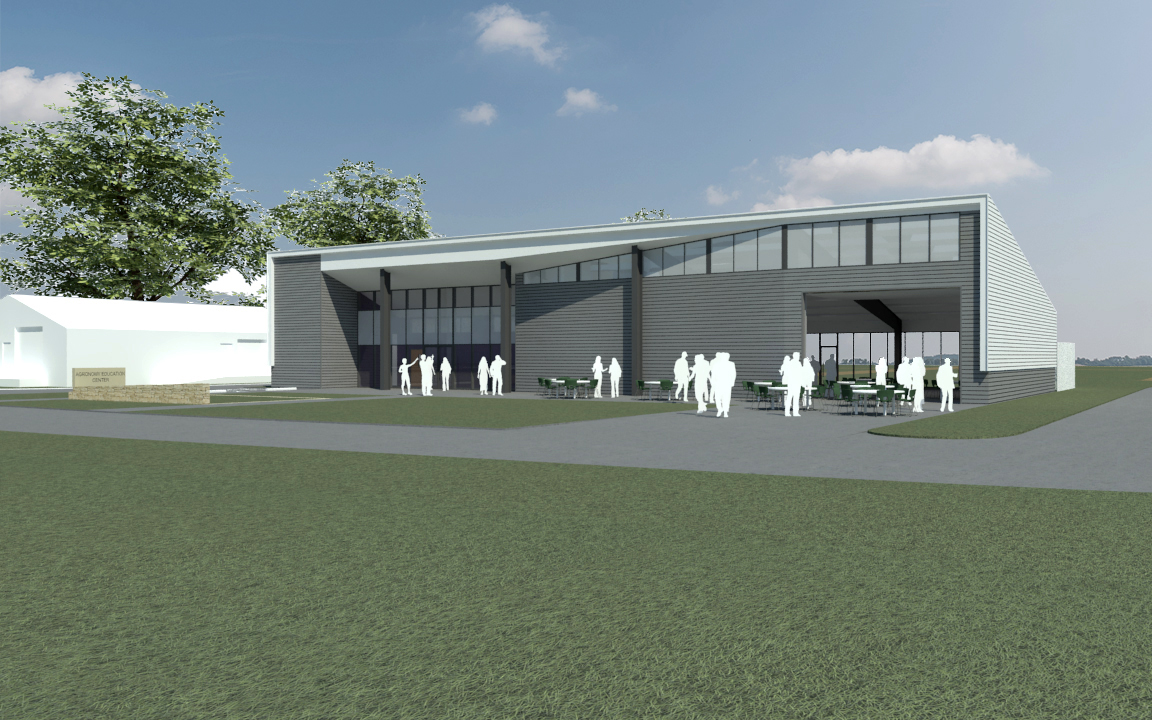The Agronomy Building, planned for Kansas State University’s campus, is dedicated to support targeted research meetings, hands-on learning, continuing education and sharing technology to agricultural producers and industry partners. Currently, most of the hands-on teaching and training occurs outside and can be compromised by inclement weather; and the lack of access to modern audio-visual teaching technology makes it difficult for educators to be effective.
The proposed project to use a newly constructed pre-engineered metal building to create a learning environment that is a direct extension of the existing research fields to the north and close to main campus. The new classrooms and exhibit hall will serve as a space to support the current and future activities of the College of Agriculture. In addition, the space will be able to host groups ranging from elementary school children to professionals to further expand their knowledge on current practices and innovations related to the field of Agronomy.
Designed with intention, elegance, and complexities, the Agronomy Education Center challenges the preconception that pre-engineered buildings are typically built to serve a basic function. The building sits on an east/west axis, giving the south elevation a stronger presence. The entry is placed along the south face and is accentuated by implementing a large portion of glazing, inviting users into the space in an easy to recognize manner. In addition, a large overhead door serves as both an access point for equipment to enter the building as well as an opportunity to open the exhibit hall for outdoor events.
The interior spaces utilize a large amount of glazing to the north, as well as a large clerestory along the exhibit hall’s south wall, allowing for the spaces to be daylit. From within the classrooms and exhibit hall, there are expansive views to the north overlooking the test fields. By utilizing a large amount of glazing, a visual connection is created linking both the hands-on learning aspect with the traditional classroom learning environment.
Back to Projects

